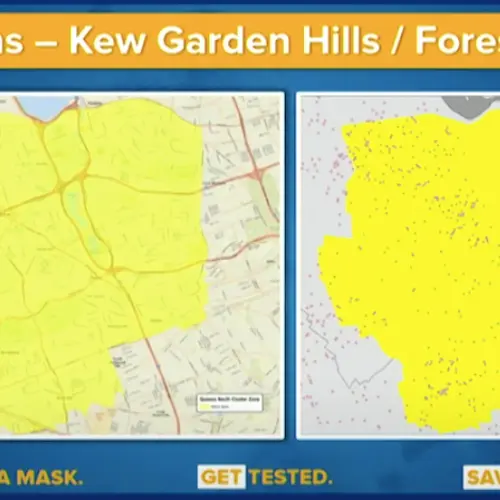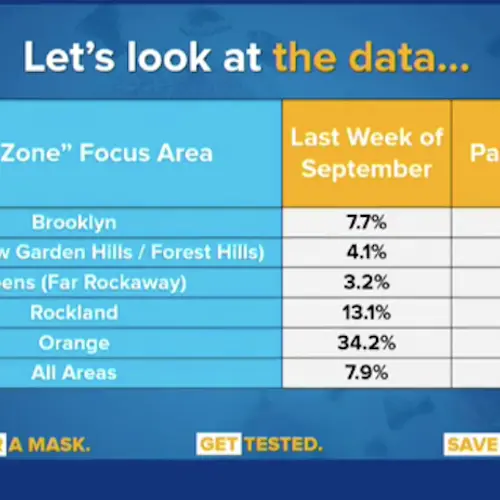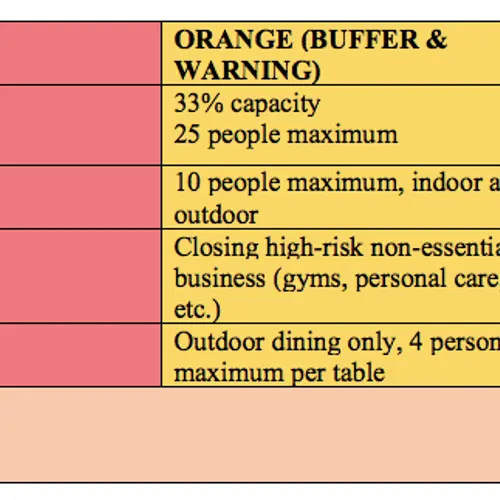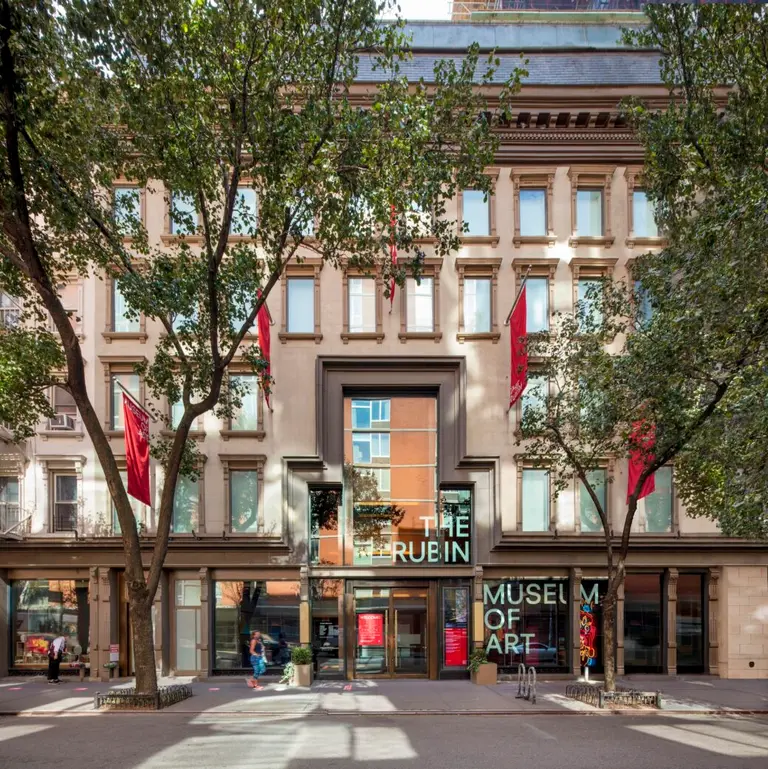Cuomo eases some restrictions in Brooklyn and Queens COVID-19 clusters
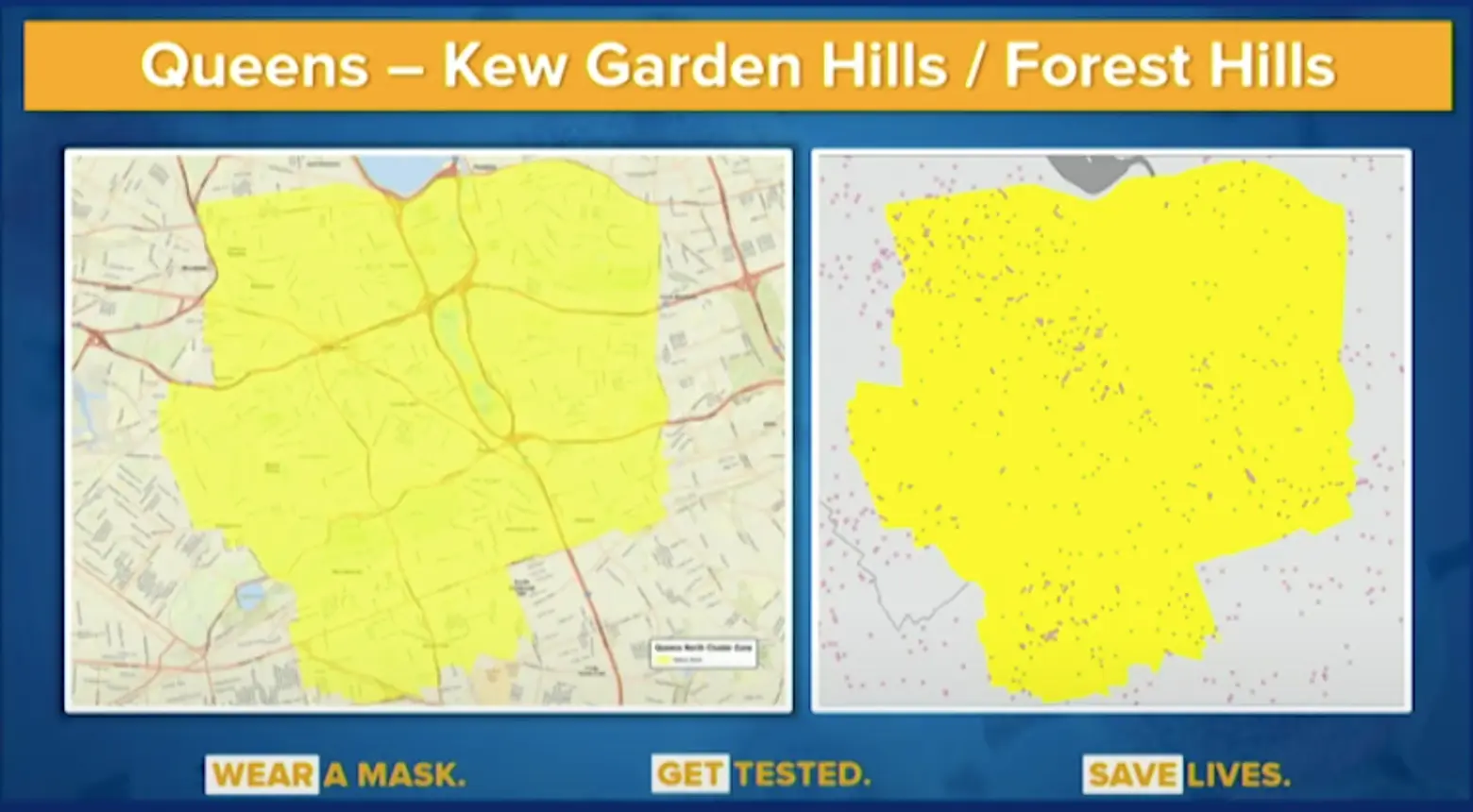
New “yellow zone” maps for Queens’ clusters; Courtesy of Gov. Andrew Cuomo’s office
The state will loosen some restrictions in coronavirus clusters in parts of Brooklyn and Queens after positive infection rates decreased, Gov. Andrew Cuomo announced on Wednesday. As a way to contain the spread of the virus in hot spots across New York, the state earlier this month divided the clusters into three categories depending on positivity rates, with red, orange, and yellow zones determining the level of restrictions. According to Cuomo, all clusters in Queens can exit the red zone and enter yellow, meaning businesses and schools can reopen and houses of worship can increase capacity to 50 percent. But in Brooklyn, the red zone will remain red, with orange and yellow zones now both yellow.

Courtesy of Gov. Andrew Cuomo’s office
The state released new metrics on Wednesday to adjust zones when positivity rates increase or decrease. Clusters can exit a red zone if the positivity rate remains under 3 percent after 10 days (or 4 percent in less populated areas), exit an orange zone if the rate remains below 2 percent after 10 days (3 percent in populated areas), and exit a yellow zone if the rate is 1.5 percent after 10 days (2 percent in less populated areas).
“Don’t panic, don’t fear,” Cuomo said during a press briefing. “We have it managed. We know how to do this. We just have to do this.”
All clusters in Queens, which includes the neighborhoods of Kew Gardens, Forest Hills, and Far Rockaway, will exit red and orange zones and become yellow. The state also adjusted the map to add Ozone Park to the yellow buffer zone after reporting an uptick in cases there.
In Brooklyn, Cuomo said officials will continue to review the data of the red zone and increase virus control measures. Neighborhoods in this cluster include Borough Park, Midwood, Bensonhurst, Mapleton, Gravesend, and Flatlands. Brooklyn’s orange zone will move to yellow and its yellow zone will remain yellow.
In the yellow precautionary zone, businesses can stay open, indoor and outdoor dining is permitted, and schools can stay open with mandatory weekly testing of students and teachers. In this area, mass gatherings are capped at 25 people maximum, with houses of worship at 50 percent capacity.
All red zone areas saw positivity rates drop between the last week of September and the past seven days. In Brooklyn, 7.7 percent tested positive for the virus during the last week of September compared to 5.5 percent during the past week. In Kew Gardens and Forest Hills, the positivity rate decreased from 4.1 percent during the last week of September to 2.5 percent during the past seven days. Similarly, in Far Rockaway, the positivity rate dropped from 3.2 percent to 1.8 percent.
The red zones in Rockland and Orange Counties will remain red, according to the state. Cuomo also said there has been an uptick in COVID-19 cases along the Pennsylvania border. In Steuben County, where the positivity rate has been 4 percent for three weeks, the state will designate it as a yellow zone. In Chemung County, where the rate has been at 5 percent for three weeks, there will be orange and yellow zones implemented.
As of Wednesday, the red zone areas had a 6.61 percent positivity rate and the daily statewide infection rate excluding the red zones was 1.42 percent.
RELATED:
